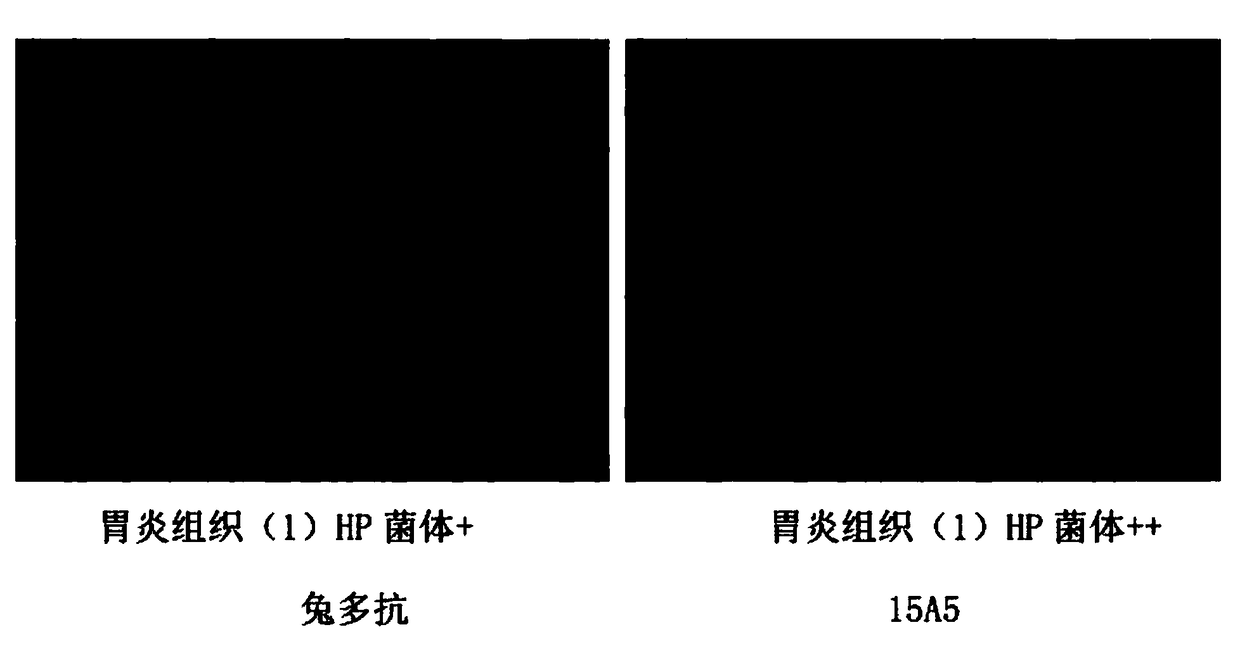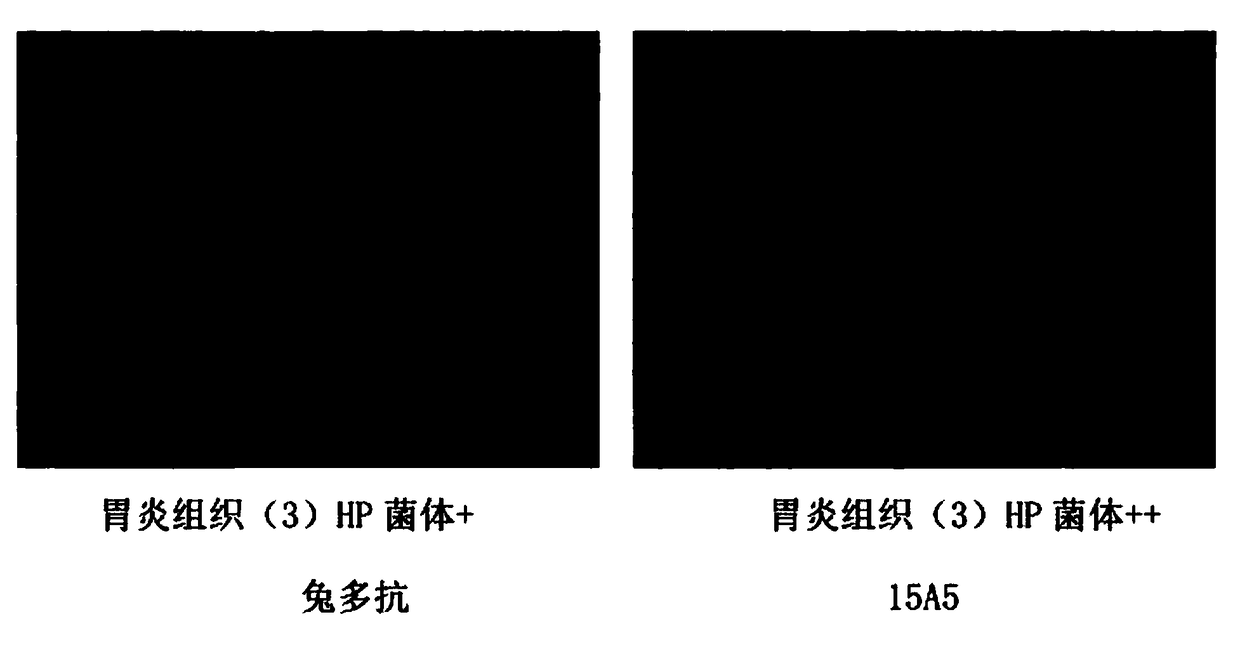Monoclonal antibody capable of resisting helicobacter pylori protein, and cell line, preparation method and application thereof
A Helicobacter pylori and monoclonal antibody technology, applied in the field of biomedical engineering, can solve the problems of large differences in polyclonal antibodies, stability and practical application effects are yet to be tested, and difficult to stabilize applications, etc., to achieve high-sensitivity effects
- Summary
- Abstract
- Description
- Claims
- Application Information
AI Technical Summary
Problems solved by technology
Method used
Image
Examples
Embodiment 1
[0025] Embodiment 1 Helicobacter pylori culture and thalline protein preparation
[0026] Put the obtained Helicobacter pylori (ATCC 700392, Strain Designations: 26695) into a 37°C constant temperature water bath, shake it to thaw quickly, and use an inoculation loop to inoculate an appropriate amount of strain on the prepared Columbia medium (according to the ratio of 1000ml: 41g respectively Add pure water and Columbia culture medium (Beijing Suo Laibao Technology Co., Ltd., add 8% defibrated sheep blood), according to the conditions of the primary culture, place the plate in a microaerophilic tank and cultivate it for 2 days. A milky white viscous bacterial lawn grows, wash the bacterial lawn with PBS buffer pH7.4, centrifuge at 5000rpm for 5 minutes, discard the supernatant, then add 500μl of PBS, sonicate the bacterial cells, and centrifuge at 14000rpm for 15 minutes after ultrasonication. The supernatant was transferred to a new centrifuge tube, the pellet was resuspende...
Embodiment 2
[0027] The establishment of embodiment 2 hybridoma cell lines
[0028] 1. Immunity
[0029] The supernatant and precipitated thalline protein obtained in Example 1 were respectively emulsified with complete Freund's adjuvant (Sigma company), and after mixing according to the ratio of 1:1, immunized 4-6 week old female Balb / c mice (purchased from Beijing Weitong Lihua Experimental Animal Technology Co., Ltd.), and each mouse was injected subcutaneously at 6 points in the abdomen, with a dose of 60 μg / only. Immunization was boosted every 14 days, and the antigen was emulsified with Freund's incomplete adjuvant (Sigma Company) at a dose of 30 μg per mouse. 7 days after the third booster immunization, indirect ELISA (wavelength 450nm) was used to detect the polyantibody titer of the anti-immunogen in the mouse serum. 50μg / only.
[0030] 2. Cell Fusion
[0031] Aseptically prepare the mouse splenocyte suspension that meets the immune standard, mix it with mouse myeloma cell sp2...
Embodiment 3
[0036] Example 3 Preparation of Monoclonal Antibody by Ascites Induction Method
[0037] 1. Ascites preparation
[0038] The cells in the logarithmic growth phase were washed with serum-free medium and suspended, counted about 5×10 5 , 1ml. The suspended cells were injected intraperitoneally into mice previously sensitized with paraffin oil. Ascites collection was started 7 days later. The removed ascites was centrifuged at 4000rpm for 10min at 4°C. Carefully suck out the ascites in the middle and collect in a centrifuge tube, and store at 4°C or -20°C.
[0039] 2. Purification of monoclonal antibodies
[0040] Antibody was purified from ascitic fluid by HiTrap rProtein A FF (GE Company) affinity chromatography according to the manual. The purity was identified by SDS-PAGE gel, and the concentration was determined by Bradford method. Purified antibodies were stored at -20°C.
PUM
 Login to View More
Login to View More Abstract
Description
Claims
Application Information
 Login to View More
Login to View More - R&D
- Intellectual Property
- Life Sciences
- Materials
- Tech Scout
- Unparalleled Data Quality
- Higher Quality Content
- 60% Fewer Hallucinations
Browse by: Latest US Patents, China's latest patents, Technical Efficacy Thesaurus, Application Domain, Technology Topic, Popular Technical Reports.
© 2025 PatSnap. All rights reserved.Legal|Privacy policy|Modern Slavery Act Transparency Statement|Sitemap|About US| Contact US: help@patsnap.com



